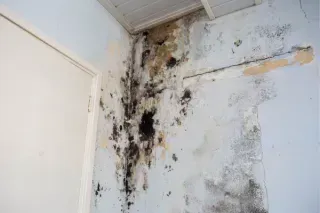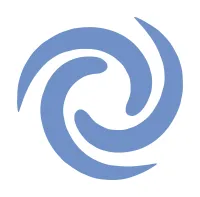Welcome to Our Blog
Insights and tips to keep your living environment safe and healthy.

The Common Types of Mold Found in Santa Barbara
For those of us lucky enough to live or work in Santa Barbara, we know that this idyllic California town offers a beautiful backdrop for life. We are truly blessed to live in such a picturesque place with a lovely climate!

However, Santa Barbara’s moderate climate and proximity to the ocean can create ideal conditions for mold growth. Mold spores are ever-present in the environment, and when they find a damp, warm environment indoors, they can spread quickly and become a health hazard. At Advanced Clear Air Solutions, we're committed to helping Santa Barbara residents breathe easy by providing comprehensive mold inspection services.
In this blog, we'll discuss some of the most common types of mold found in Santa Barbara homes and provide information on how to identify and address them.
Understanding Mold and Its Impact
Mold is a fungus that reproduces by releasing spores into the air. These spores can land on damp surfaces and germinate, forming colonies that can damage building materials and furnishings. Dry rot is actually a result of mold that’s damaging structures. While some molds are harmless, others can produce allergens and irritants that trigger respiratory problems, skin irritation, and even neurological symptoms in some individuals.
Why Does Mold Thrive in Santa Barbara?
The key factors contributing to mold growth in Santa Barbara include:
Mediterranean Climate: Warm summers and mild, wet winters create a breeding ground for mold spores.
Coastal Location: Ocean breezes and fog can contribute to increased indoor humidity.
Older Buildings: Homes built before modern building codes may lack proper ventilation, leading to moisture buildup. Older buildings tend to be less watertight.
Topography: Bad drainage is common in Santa Barbara because of the way water runs off of high areas and towards buildings. Any time water flows towards the foundation of a house, there is a risk for drainage problems. Hilly neighborhoods can suffer from a lack of drainage infrastructure in high intensity rains. Our expert inspectors can assess and help you correct landscape drainage issues that lead to mold problems.
Leaking Pipes: Plumbing leaks and condensation on pipes can create pockets of moisture ideal for mold growth.
Common Mold Types in Santa Barbara Homes
Several mold species are commonly found in Santa Barbara homes and buildings. Here's a closer look at a few:
Aspergillus:
Imagine a big family of molds, some good, some not so good. That's Aspergillus! There are many types, but two common ones are Aspergillus flavus and niger. They can be greenish-black or brown and like to grow on all sorts of things, from walls in your house to dust bunnies under the couch. Some Aspergillus molds can make you sneeze and wheeze if you breathe them in. Because they love damp and warm places, Aspergillus is a common mold both indoors and outdoors. You might find them hanging out in your air conditioner, hiding in the walls, or spreading through the insulation. There are over 185 different Aspergillus molds, but a few, like Aspergillus fumigatus, are especially common here in Santa Barbara.
Health Risks:
Respiratory issues
Allergic reactions
Aspergillosis (a serious infection)
Identification:
Typically green, white, or yellow
Appears as a powdery or fluffy substance
Penicillium:
There's another type of mold commonly found indoors called Penicillium. You might recognize the name because it's related to the medicine penicillin, which fights infections. But not all Penicillium is good for you. Some types can irritate your airways and trigger allergies. These molds can be green, blue, or yellow and like to grow in damp places on things like wallpaper, carpets, and old fabrics. If you find Penicillium in your house, it might be a sign of past water damage.
Health Risks:
Allergic reactions
Sinus infections
Chronic bronchitis
Identification:
Blue or green
Velvety texture
Cladosporium:
Imagine black or brownish mold that likes it damp and cool. This mold lives outside a lot, munching on fallen leaves and other damp organic matter. Spores, like tiny mold seeds, can easily float inside through windows and doors. For some people, breathing in these spores can cause allergy symptoms. Unlike some molds that are picky about temperature, Cladosporium can handle both warm and cool temperatures. You might find it growing on wood furniture, carpets, or clothes, and it can sneak into air vents or hide around windows.
Health Risks:
Allergic reactions
Asthma symptoms
Skin infections
Identification:
Dark green, brown, or black
Suede-like texture
Alternaria:
Alternaria is a type of mold that usually lives outside on plants and dead leaves. It can sneak inside your house through open windows and doors, or come in on your pets. If you have damp areas indoors, like showers, under sinks, or a crawl space, Alternaria can decide to grow there too. This mold is usually dark brown or black. The bad news is that Alternaria can trigger allergies, making you sniffle and sneeze like you have hay fever.
Health Risks:
Allergic reactions
Asthma exacerbations
Respiratory infections
Identification:
Dark green or brown
Hairy or wooly texture
Stachybotrys chartarum (Black Mold):
Black mold, also known as Stachybotrys, is the most dangerous toxigenic mold that grows in Santa Barbara, and thats why it gets a bad rap. It likes to grow in constantly damp places like bathrooms, basements, and kitchens after leaks or water damage. For this reason we call it a “marker mold” - meaning is a “marker” of water damage in a structure. In the Central Coast region, two common types of black mold are Stachybotrys chartarum and Chaetomium spp. Particularly pervasive on damp walls they can pose a serious health risk to individuals. Black mold usually looks greenish-black and slimy. The presence of these toxigenic molds in a structure means that you need professional remediation as quickly as possible to protect the health and safety of the residents, and to protect the structure of the building.
Health Risks:
Severe respiratory issues
Chronic fatigue
Headaches
Neurological problems
Identification:
Dark greenish-black
Slimy or wet appearance
Identifying Mold Growth
The presence of mold isn't always obvious. However, some signs can indicate a potential problem:
Visible mold growth: Look for discolored patches on walls, ceilings, floors, or furniture. These patches can be black, green, brown, white, or gray.
Musty odor: A persistent, earthy smell is a common indicator of mold growth.
Respiratory problems: If you experience coughing, sneezing, wheezing, or difficulty breathing after spending time indoors, it could be a sign of mold exposure.
Skin irritation: Mold exposure can cause itchy, red, or irritated skin.
Addressing Mold Growth
If you suspect mold growth in your Santa Barbara home or business, it's crucial to take action promptly. Here's what to do:
Identify the source of moisture: Mold thrives in damp environments. Fix any leaks, plumbing issues, irrigation issues, landscape issues, or drainage issues that might be causing moisture problems inside or outside the structure.
Increase ventilation: Improve air circulation by opening windows and doors regularly. Use exhaust fans in kitchens and bathrooms during use. If you have a crawl space, there should be ventilation there as well.
Hire a professional: For larger mold infestations or if you're unsure about the type of mold, contact a professional mold remediation company like Advanced Clean Air Solutions.
Benefits of Professional Mold Remediation
Professional mold remediation companies have the expertise and equipment necessary to safely and effectively remove mold from your property. We are not a remediation company, but if our mold test shows that you need remediation, we can help you find the best company for your specific situation. Here's why hiring a professional is often the best course of action:
Safety: Mold remediation can be hazardous, especially if you're dealing with large infestations or toxic mold species. Professionals have the training and equipment to protect themselves and others from exposure.
Effectiveness: Professionals use advanced techniques and EPA-approved products to ensure complete mold removal and prevent regrowth.
Peace of mind: We can help you assemble a team that will fix the problem. The team might include plumbers, landscapers, roofers, mold remediators, builders, and/or duct cleaners. We specialize in cost-effective solutions that work to both fix moisture problems and mold problems. This can save you time, stress, and money in the long run.
Advanced Clear Air Solutions: Your Partner in Health
At Advanced Clear Air Solutions, we understand the importance of maintaining a healthy indoor environment for your family. Our team of certified professionals can help you identify mold growth, assess the extent of the problem, and develop a customized remediation plan to ensure your home is safe.
We utilize advanced technologies and techniques to remove mold spores effectively while minimizing disruption to your home. We prioritize your health and safety throughout the process, ensuring a thorough, cost effective, and eco-friendly remediation.
Case Study: Mold Infestation in a Santa Barbara Home
In one case, Advanced Clear Air Solutions was called to inspect a home in Santa Barbara where the occupants were experiencing unexplained health issues. Upon inspection, we found significant mold growth in the HVAC system, which had gone unnoticed for years. The mold was primarily Aspergillus and Cladosporium.
Steps Taken:
Inspection: We conducted a thorough inspection using advanced mold detection tools.
Moisture Mapping: The mold was growing because there was elevated moisture in the subfloor due to an undetected plumbing leak. By using our sensitive moisture detectors, we mapped out the moisture levels in walls, floors, and ceilings to find the part of the house that was soaked by the leak. This moisture map was then used by the plumbers to efficiently detect and fix the leak.
Plumbing Fix: Plumbers were called in to quickly and efficiently fix the leak that was located with moisture m mapping,
Dry-out: Once the moisture issue was fixed, the dry-out began. We coordinated a trusted local partner to bring in fans that reduced the moisture to levels where mold could no longer grow.
Deep Clean: We used HEPA vacuums and EPA-approved antimicrobial treatments to remove the mold.
Prevention: The HVAC system was cleaned to remove particulate matter & mold spores, and then the system was fogged with an eco-friendly treatment to prevent future mold growth.
After this process, we re-tested for mold in the home and the report showed zero cultural mold in the home. The mold issue had been corrected without any costly demolition. The homeowners reported a significant improvement in their health following the process.
Don't let mold take a toll on your health and home. Contact Advanced Clear Air Solutions today for a free consultation and breathe easy with peace of mind.
Copyright @ 2025 - All rights reserved
Advanced Clean Air Solutions, LLC
351 Paseo Nuevo 2nd Floor #1033
SANTA BARBARA, CA 93101

